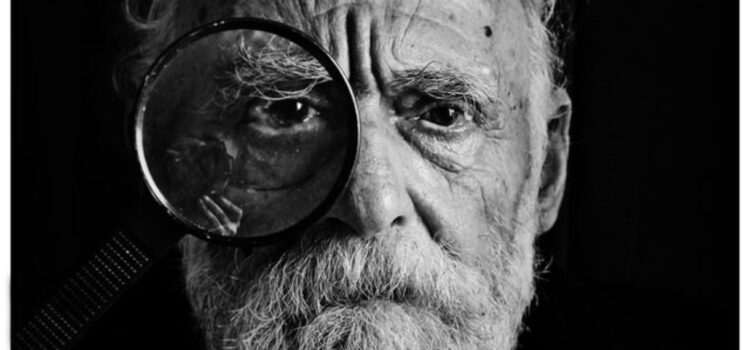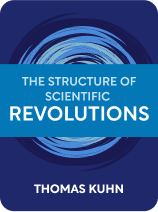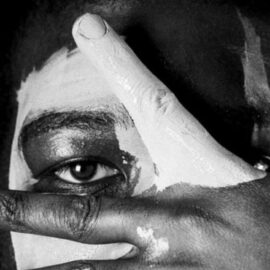

This article is an excerpt from the Shortform book guide to "The Structure Of Scientific Revolutions" by Thomas Kuhn. Shortform has the world's best summaries and analyses of books you should be reading.
Like this article? Sign up for a free trial here .
What is the process of scientific discovery? How do scientific discoveries start and what does it take for them to become accepted facts and theories?
The process of scientific discovery starts when scientists find an anomaly that can’t be explained within the current paradigm. This process ends when the paradigm has changed so that the anomalous event is now expected.
Keep reading to learn about the process of scientific discovery.
What Is the Process of Scientific Discovery?
New discoveries start with anomalies. When an observation doesn’t match the expectations set by the current paradigm, there is an anomaly; in that sense, a paradigm is actually needed for new discoveries. You must know what to expect before you can recognize that something’s wrong.
However, anomalies don’t always lead to new discoveries—as we’ve said before, sometimes they’re ignored or brushed aside as mistakes, edge cases, or something too inconvenient to deal with. It usually takes some time for scientists to recognize and acknowledge that the anomaly is important, and must be addressed. Sometimes that never happens at all.
After finally being acknowledged, the anomaly is investigated. Assuming that the anomaly is natural, and not the result of human error, a change in paradigm is needed to account for it.
This process of scientific discovery ends when the paradigm has changed so that the anomalous event is now expected. This is more difficult than it sounds. At this point scientists aren’t just adding new knowledge, they’re rejecting old knowledge, and many of their colleagues will resist the change. That resistance to change is part of why the process of scientific discovery and paradigm change is so drawn-out.
A psychological experiment helped to demonstrate this effect. In the experiment, subjects were shown a series of playing cards. However, some of the cards were altered, such as a black four of hearts. Subjects identified the familiar cards easily, but hesitated with the ones that were outside their normal experience of playing cards—that is to say, the anomalies.
Some subjects even became upset by the anomalous cards; they started doubting what they were seeing or how they were interpreting it rather than realizing that it was simply an altered card. Others would incorrectly identify the black four of hearts as either a normal four of hearts, or the four of spades. They immediately and without thinking tried to fit it into their current paradigm of playing cards.
However, when shown the cards a second time, most subjects were able to recognize what had happened and correctly identify all of the cards, including the anomalies. This is a parallel to scientists recognizing that they had not made a mistake, and that their paradigm needs to be adjusted.
The Word “Discovery” Is Misleading
Tracking the process of scientific discovery can be difficult because, in order to really claim a new discovery, a scientist has to find, understand, and announce it. In other words, the scientist must present the fact and a corresponding theory, not only the fact itself.
This can take a great deal of time, which makes it hard to pinpoint exactly when a discovery happened. Therefore, the word discovery may actually be misleading. It implies a single event that happened at a certain time. To understand how closely intertwined fact and theory are, and how difficult it can be to pinpoint when a “discovery” happened, consider oxygen gas: At least three different scientists could reasonably take credit for discovering it.
C.W. Scheele may have been the first person ever to make a pure oxygen sample. However, he didn’t publish his work until after it had been discovered and announced in many other places, so he’s not usually credited for this breakthrough.
Joseph Priestley collected a sample of oxygen-enriched air, but not pure oxygen. He tried to claim that he had discovered the element, but if bottling impure air is enough to take the credit, then he was hardly the first to do so. Plus, it was several years before Priestley even understood what he had bottled; at first he thought it was nitrous oxide, a type of gas that scientists already knew about.
Antoine Lavoisier was the first to collect and correctly identify a sample of pure oxygen, and so he is the one usually credited with discovering it. Some scientists even argue against this claim, since Lavoisier didn’t fully understand how oxygen gas was made. However, the paradigms that led Lavoisier to incorrectly identify how oxygen was produced weren’t rejected until almost a century later, and by that point oxygen itself was firmly entrenched in chemistry.
So you see how it can be difficult to pinpoint the exact process of scientific discovery and whom it should be attributed to. In fact, the deeper you look into the history of oxygen gas, the less clear it becomes who deserves the credit for discovering it.

———End of Preview———
Like what you just read? Read the rest of the world's best book summary and analysis of Thomas Kuhn's "The Structure Of Scientific Revolutions" at Shortform .
Here's what you'll find in our full The Structure Of Scientific Revolutions summary :
- How scientific paradigms evolve and become replaced with new paradigms
- Why science is more about figuring out what isn't right
- How throwing out past achievements allows for scientific progress






